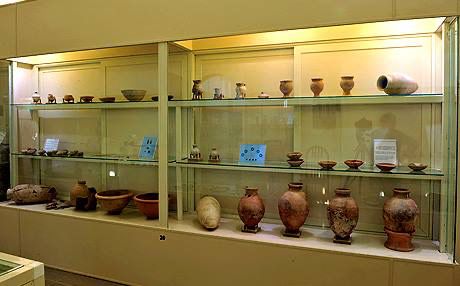The Kurdistan Region is home to a variety of museums, both government-run and privately established, that showcase the area’s rich history and cultural heritage. These institutions, ranging from national museums to private collections, are not only important cultural landmarks but also popular destinations for locals and visitors alike. Among the most notable museums in the region are:
Erbil civilization museum
Founded in 1960 in the Minaret neighborhood of Erbil, this museum has undergone two relocations: first in 1970 to the Erbil Citadel, and again in 1989 to its current location on Qalinj Agha Hill, near Hotel Čwarchira. The museum’s collection spans an impressive range of artifacts, with the oldest dating back over 60,000 years. As the second-largest museum in the region, the Erbil Civilization Museum plays a key role in preserving the area’s archaeological and cultural heritage.
Slemani museum
Established on July 14, 1966, in Slemani’s Shorish neighborhood, this museum moved in 1980 to Salem Street, where it became the largest museum in the Kurdistan Region. Its diverse collection includes historical and cultural artifacts from various periods of history. Among the museum’s most significant items is the “Epic of Gilgamesh” tablet, considered the oldest known written work of literature. In 2011, the museum was renovated with the support of the Kurdistan Regional Government, UNESCO, and several European universities.
Museum of Kurdish weaving and textile arts
Housed within the Erbil Citadel, this museum was established in 2004 to preserve Kurdish textile heritage. It boasts a collection of ancient household items, including carpets, kilims, traditional weaving tools, and agricultural implements. These artifacts reflect centuries of Kurdish craftsmanship and cultural practices in weaving and textile arts.
Kurdish cultural museum
Opened in 2015 in the historic Ferah Hotel in Sulaymaniyah, this museum holds a vast collection of nearly 2,000 cultural artifacts. These include clothing, jewelry, manuscripts, and household items dating from 50 to 400 years ago. One of the museum’s most notable exhibits is a special collection related to the Jewish community of Sulaymaniyah, featuring rare Torah scrolls and other Judaic artifacts that were used by the local Jewish population before their migration to Israel.
Together, these museums offer a fascinating window into the rich and diverse cultural heritage of the Kurdistan Region, attracting visitors from across the world and preserving the region’s history for future generations.

